Why maintain our languages?
Language connects us to our land, culture and ancestors. It is through our language that we see and describe the world around us. Each language has a unique way to see the world. When a language is no longer spoken, we aren’t just losing the language, we are losing a way to see the world thought that language and the connection to our land, culture and ancestors.
The right of First Nations people to use our own languages has been asserted by Aboriginal and Torres Strait Islanders since time immemorial. These rights are also enshrined in the United Nations Declaration on the Rights of Indigenous Peoples (UNDRIP). While language rights are key to many of the UNDRIP Articles, the following Articles focus specifically on language rights:
Article 13.1. Indigenous peoples have the right to revitalize, use, develop and transmit to future generations their histories, languages, oral traditions, philosophies, writing systems and literatures, and to designate and retain their own names for communities, places and persons.
Article 14.1. Indigenous peoples have the right to establish and control their educational systems and institutions providing education in their own languages, in a manner appropriate to their cultural methods of teaching and learning.
Article 14.3. States shall, in conjunction with indigenous peoples, take effective measures, in order for indigenous individuals, particularly children, including those living outside their communities, to have access, when possible, to an education in their own culture and provided in their own language.
Article 16.1. Indigenous peoples have the right to establish their own media in their own languages and to have access to all forms of non-indigenous media without discrimination.
There are many reasons to maintain Aboriginal and Torres Strait Islander languages. These languages are unique in that they are not related to any other languages on Earth. Australia covers more than 780 Aboriginal and Torres Strait Islander languages, which can be grouped into around 250 language families. These languages belong to the oldest living cultures in history, and the knowledge contained within them is invaluable. Unfortunately, however, over 90% of Aboriginal and Torres Strait Islander languages are critically endangered. If we don’t act to support them now, they may be lost forever.
In its Social Justice Report (2009), the Australian Human Rights Commission states:
Language and culture are interdependent. It has long been understood that language is the verbal expression of culture. It is the medium through which culture is carried and transferred. Stories, songs and the nuanced meaning of words contain the key to understanding one’s world and one’s part within it. Strong culture gives the individual a sense of belonging to people and places. For this reason, language and culture are deeply interconnected and core parts of one’s identity.
There is now a significant body of evidence which demonstrates a range of benefits for Indigenous peoples and minority groups when they maintain strong connections with their languages and culture. Having one’s mother tongue bestows various social, emotional, employment, cognitive and health advantages. Bilingualism provides yet another layer of advantage for minority language speakers. Keeping the mother tongue and then mastering English for example, provides minority language speakers with the advantage of being able to operate in different contexts. This in turn increases one’s life chances and employment options.
Language maintenance is important in promoting resilience, improved health and cognitive function, as well as increased employment options for First Nations people. In contrast, the cost of language loss is inestimable. For more detail see ‘The perilous state of Indigenous languages in Australia’.
For information about the links between participating in language activities and well-being for Aboriginal and Torres Strait Islander individuals and communities you can read more here.
